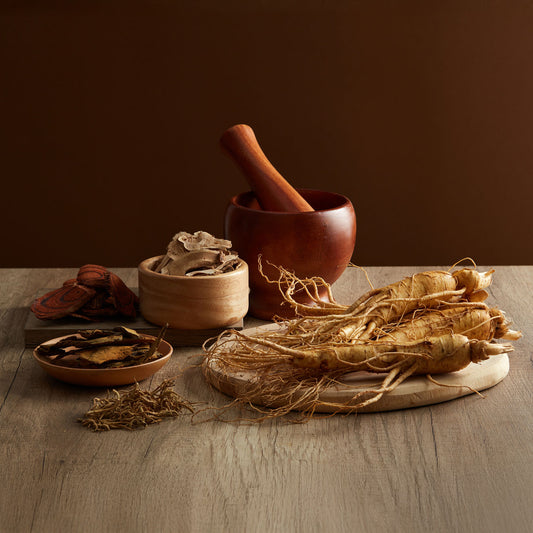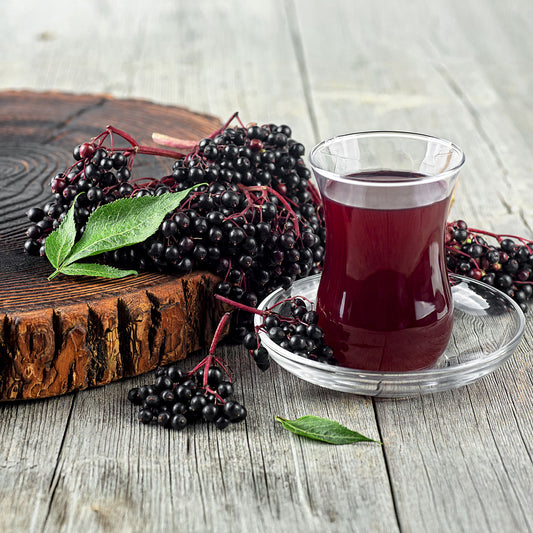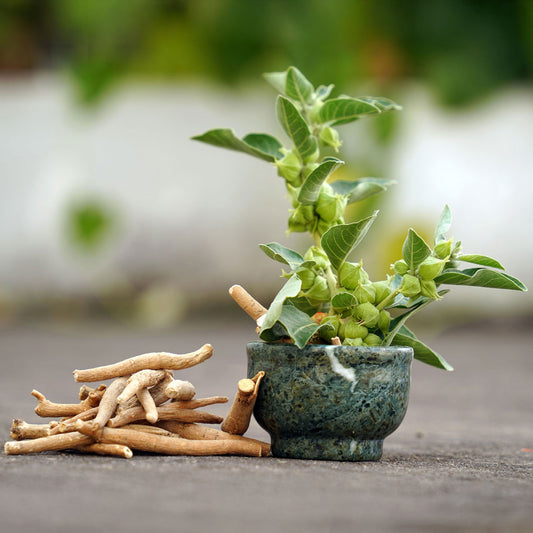Latin Name: Withania somnifera
Common Names: Indian Ginseng, Winter Cherry
Botanical Description
Ashwagandha (Withania somnifera) is a small, woody shrub belonging to the Solanaceae (nightshade) family. It is characterized by oval leaves, yellow flowers, and red berry-like fruit. The plant’s root is the most commonly used part in herbal preparations. Ashwagandha grows up to 1.5 meters tall and is native to India, parts of the Middle East, and North Africa.
Growing Conditions
Ashwagandha thrives in dry, arid climates with full sunlight. It grows best in well-drained, sandy, or loamy soils, and tolerates drought conditions. The plant is typically grown in the drier regions of India and other parts of Asia and Africa. Ashwagandha is relatively hardy and can be cultivated in regions with warm temperatures and minimal rainfall.
Traditional and Contemporary Uses
Ashwagandha has been used for over 3,000 years in Ayurvedic practices, where it is valued as a “rasayana,” or rejuvenating herb, often used to support overall vitality and well-being.
In modern herbal practice, Ashwagandha is typically used to support:
- Stress and relaxation: Ashwagandha is commonly known for its adaptogenic properties, supporting the body’s natural response to occasional stress and promoting a sense of calm.
- Energy and endurance: Traditionally used to support physical stamina and energy levels without overstimulation.
- Cognitive function: Ashwagandha has been used to support focus, memory, and mental clarity.
- Immune system support: It is believed to support the body’s immune health, helping to promote general well-being.
Constituents
The key active compounds in Ashwagandha are withanolides, which are naturally occurring steroidal lactones. These compounds are believed to contribute to Ashwagandha’s adaptogenic and stress-relieving properties. Other constituents include alkaloids, saponins, and withaferins.
Harvesting and Sustainability
Ashwagandha is typically harvested for its root, which is collected during the winter months. The plant matures within 150 to 180 days of planting. Sustainable cultivation is important for maintaining its availability, especially as global demand for adaptogens like Ashwagandha continues to grow. Currently, there are no major sustainability concerns with Ashwagandha cultivation, but responsible farming practices should be followed.
Precautions and Considerations
Ashwagandha is generally considered safe when used according to recommended guidelines. However, individuals who are pregnant, nursing, or taking medications, particularly for thyroid or hormone-related conditions, should consult a healthcare professional before using Ashwagandha supplements. It is important to adhere to dosage recommendations to avoid potential side effects such as digestive upset.








